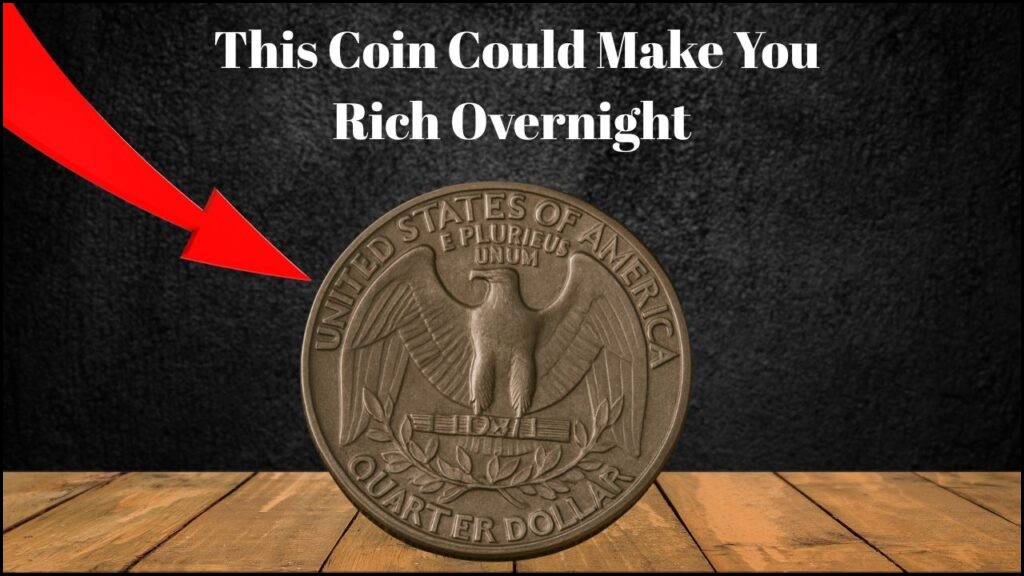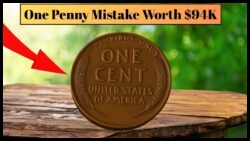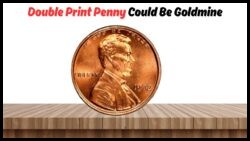U.S. Coin – In a move that has stunned collectors and citizens alike, the U.S. Mint has officially halted the production of the humble penny. For years, debates have raged over the cost-effectiveness of producing a coin that costs more to make than its actual face value. But now that the penny is no longer being minted, something unexpected is happening — certain rare and historical U.S. coins are skyrocketing in value, with one particular coin becoming the secret star of the collector world. While many Americans may overlook the pennies sitting in their jars, drawers, and glove compartments, experts are warning that doing so could be a costly mistake. Some of these coins — especially those minted before 1982 or those with minting errors — could now be worth thousands or even millions of dollars. This article uncovers the truth behind the discontinued penny, the coin that’s making headlines, and how you could be sitting on a small fortune without even knowing it. Let’s explore the full story, the coins to look out for, and what you can do to cash in on this unexpected turn of events.
Why the U.S. Mint Stopped Making Pennies
The decision to stop minting pennies wasn’t sudden — it was the result of years of economic and political discussion.
- Production Cost Exceeded Face Value: Each penny cost about 2.1 cents to manufacture.
- Copper and Zinc Prices: The metals used in pennies have become more expensive over time.
- Environmental Impact: Mining and producing billions of coins created unnecessary pollution.
- Lack of Use in Digital Transactions: Pennies are rarely used in card or online purchases.
- Global Trend: Countries like Canada and Australia already eliminated their smallest coins.
The final decision came in 2025 when the U.S. Treasury announced that it would no longer produce new pennies starting July 1, 2025.
The Coin That’s Now Turning Heads
As collectors and dealers scramble to acquire discontinued pennies, another coin is emerging as a breakout star — the 1943 Lincoln Copper Penny.
| Coin Name | Estimated Value (2025) | Unique Features | Known Quantity |
|---|---|---|---|
| 1943 Lincoln Copper Penny | Over $1.2 million | Minted in copper by mistake | Less than 20 |
| 1955 Doubled Die Penny | $10,000 to $50,000 | Misprinted date and letters | A few thousand |
| 1983 Double Die Reverse | $2,500 to $15,000 | Error in Lincoln Memorial | Unknown |
| 1969-S Doubled Die Obverse | Up to $75,000 | Strong doubling on “LIBERTY” | Very rare |
| 1970-S Small Date | $1,000 to $5,000 | Mint mark and date differences | Limited |
| 1982 No Mint Mark Dime | $1,200 to $3,500 | Missing mint mark | Rare |
| 1992 Close AM Penny | $1,000 to $3,000 | Letter spacing error | Rare |
These coins were already rare, but now with the penny’s discontinuation, their value has doubled or tripled overnight. Even modern pennies — especially those from before 1982, which were made mostly of copper — are becoming valuable for their metal content alone.
How Much Could Your Old Coins Be Worth?
If you have a jar full of coins, now is the time to dig through it. Here’s what you should look for:
- Pennies Dated 1981 and Earlier – These contain 95% copper and are now worth more than face value due to metal demand.
- Error Coins – Look for doubling, mint mark problems, or misaligned prints.
- Uncirculated Coins – Coins with no wear and kept in mint condition fetch higher prices.
- Wheat Pennies (1909–1958) – These have become historical items and are highly collectible.
- Special Editions or Anniversary Pennies – Some come in coin sets or limited runs.
If you happen to find a 1943 Copper Penny or 1955 Doubled Die, you could be holding a life-changing coin.
What to Do If You Think You Have a Valuable Coin
Don’t rush to sell your coins without taking proper steps. Here’s what experts suggest:
- Examine with a Magnifier: Look for doubling, small design errors, or missing mint marks.
- Use Online Coin Valuation Tools: Sites like PCGS and NGC offer free visual comparisons.
- Avoid Cleaning Coins: Cleaning reduces value — leave them in their natural state.
- Visit a Certified Coin Dealer: They can provide authentication and valuation.
- Consider Auctions: Rare coins fetch much higher prices at numismatic auctions.
Many people are unaware that they have valuable coins simply because they’ve never looked carefully.
Why Pre-1982 Pennies Are Now More Valuable Than Ever
Copper prices are soaring, and that’s good news for anyone hoarding old pennies.
| Year Range | Metal Composition | Melt Value (2025) | Face Value |
|---|---|---|---|
| Pre-1982 | 95% Copper | $0.031 per coin | $0.01 |
| Post-1982 | 97.5% Zinc | $0.008 per coin | $0.01 |
That means every pre-1982 penny is now worth over 3 cents in raw copper value alone — triple its face value!
Future of U.S. Coin Collecting After the Penny Era
The end of the penny era could mark the beginning of a new golden age for coin collectors.
- More attention is now on nickels, dimes, and quarters for hidden rarities.
- The U.S. Mint may release “farewell edition” commemorative coins, which could gain instant collector value.
- Coin-collecting apps and marketplaces are growing fast as interest surges.
Even school kids and families are getting involved in checking their spare change.
With the U.S. Mint halting penny production, and rare coin values jumping across the board, now is the perfect time to act.
Go check that old jar of coins in your kitchen or attic. If you find the right one — especially a rare 1943 Copper Penny or 1955 Doubled Die — you could sell it for enough to buy a new house, car, or even retire early.
This tiny copper disc, long ignored and underappreciated, might just become your biggest financial surprise yet.
FAQs
Q1. Why did the U.S. stop making pennies?
Because it cost more than 2 cents to produce a 1-cent coin, and usage had declined.
Q2. Which penny is worth over $1 million?
The 1943 Lincoln Copper Penny, a rare minting error, is worth over $1.2 million.
Q3. Are all pennies from before 1982 valuable?
Yes, they contain 95% copper, making them worth over 3 cents each in melt value.
Q4. How do I know if my coin is valuable?
Look for error markings, doubling, old dates, or consult a certified coin dealer.
Q5. Can I still use pennies for purchases?
Yes, they’re still legal tender — but using a rare one by mistake could cost you a fortune.






